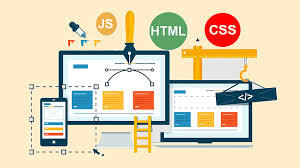
Frontend development involves creating the visual and interactive aspects of websites, web applications, and mobile apps that users directly interact with. It focuses on using languages like HTML, CSS, and JavaScript to build and style the structure, design, and functionality of frontend components.
Components of a Frontend development
Languages and Technologies:
Frontend developers use languages such as HTML (Hypertext Markup Language), CSS (Cascading Style Sheets), and JavaScript to build and style the structure, design, and functionality of frontend components.HTML:
HTML is the standard markup language used to create the structure of web pages. It defines the content and layout of elements such as text, images, forms, and multimedia.CSS:
CSS (Cascading Style Sheets) is used to style HTML elements, controlling aspects like layout, colors, fonts, spacing, and overall visual presentation. Frameworks such as Bootstrap, Foundation, and Materialize offer pre-designed styles and components for efficient frontend development.JavaScript:
JavaScript is a programming language that enhances web pages with interactivity and behavior. Frontend developers utilize frameworks and libraries like React.js, Angular, Vue.js, and jQuery to create dynamic, responsive user interfaces that adapt to user interactions and device capabilities.Responsive Design:
Ensuring websites and applications are responsive involves designing layouts that adjust and display appropriately across diverse devices and screen sizes, including desktops, tablets, and smartphones. This approach enhances user accessibility and usability across different platforms.Cross-Browser Compatibility:
Frontend developers conduct thorough testing to ensure that their code functions correctly and consistently across various web browsers (e.g., Chrome, Firefox, Safari, Edge). This testing ensures a seamless user experience regardless of the browser used to access the application.